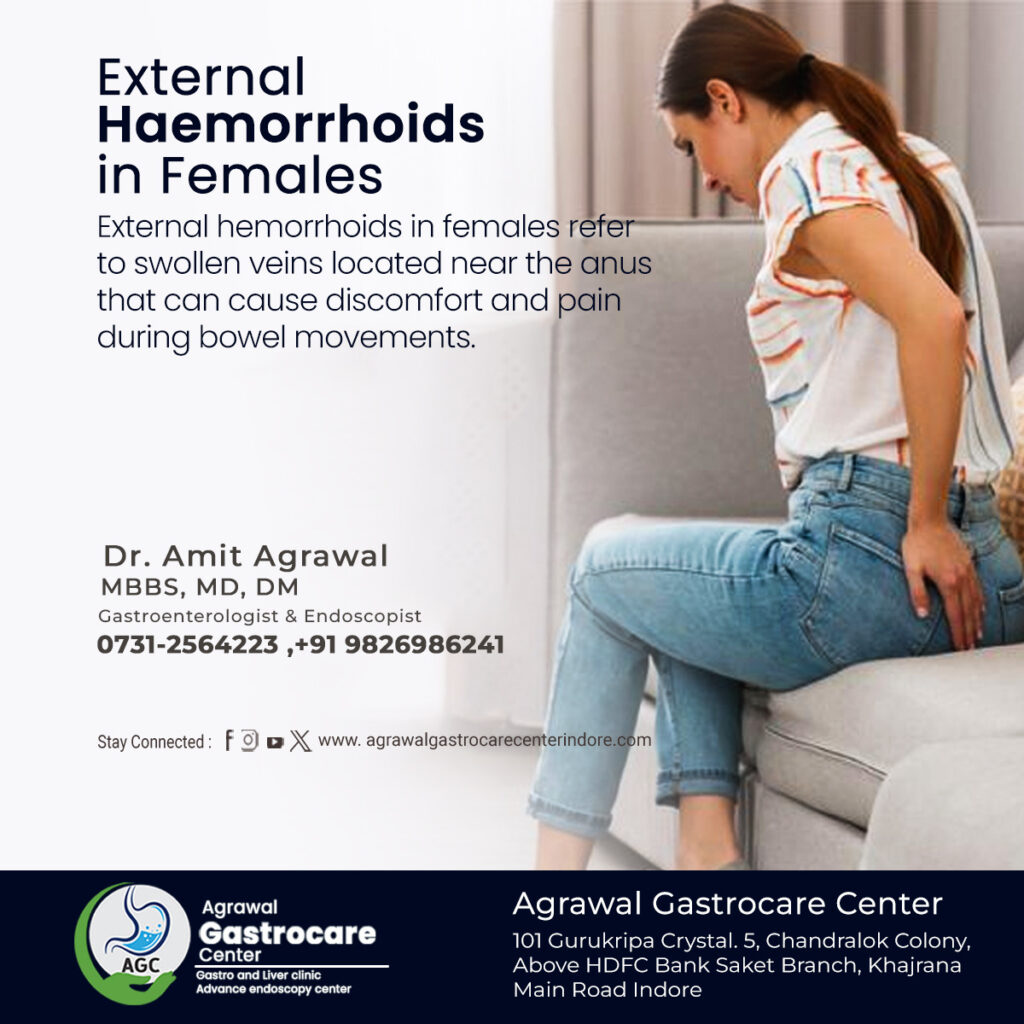External Hemorrhoids in Females, Symptoms, Diagnosis, Treatment & More
Haemorrhoids, also known as piles, are common ailments that can cause a significant amount of discomfort and pain. They result from the swelling of veins in the rectal and anal regions.
While they can affect anyone, external haemorrhoids have specific implications and considerations when it comes to females. Here, we delve into a comprehensive exploration of external haemorrhoids in females.
What Are External Hemorrhoids?
External haemorrhoids are enlarged, swollen blood vessels that develop outside the lower rectum and anus. They are often caused by increased pressure on the pelvic and rectal veins and can develop due to various factors such as straining during bowel movements, pregnancy, or obesity.
Symptoms Specific to Females
Several symptoms could be indicative of external haemorrhoids, and females might experience these differently than males due to anatomy and hormonal differences. Here are some of the key symptoms:
- Pain and Discomfort: External haemorrhoids can be quite painful, particularly when sitting or during bowel movements.
- Itching and Irritation: The area around the anus may become irritated or itchy due to the presence of external haemorrhoids.
- Swelling: There might be visible swelling or a lump near the anus, which could be tender.
- Bleeding: Although less common with external haemorrhoids, there can be some bleeding, especially after passing a stool.

Factors Contributing to External Hemorrhoids in Females
- · Hormonal Changes: Hormonal fluctuations during menstrual cycles and menopause can change the body’s blood flow and tissue health, contributing to the development of haemorrhoids.
- · Pregnancy: During pregnancy, the growing uterus exerts pressure on the pelvic veins. This increased pressure can cause veins in the rectal area to swell, leading to haemorrhoids.
- · Constipation: Women are more likely to suffer from constipation, often due to hormonal shifts or dietary reasons, which can lead to straining during bowel movements and, subsequently, haemorrhoids.
External Hemorrhoids in Females Diagnosis and Treatment
Medical Evaluation: Diagnosis typically involves a physical examination. In some cases, additional tests like an endoscopy may be performed.
Treatment Options: Treatment can range from home remedies to medical procedures, depending on severity:
- Dietary Adjustments: Increasing fibre intake can soften stools and reduce straining.
- Topical Treatments: Over-the-counter creams and ointments can help alleviate symptoms.
- Warm Baths: Sitting in warm water for 10-15 minutes a few times a day can reduce discomfort.
- Surgical Procedures: For persistent or severe haemorrhoids, surgical options such as haemorrhoidectomy or rubber band ligation are available.
Preventive Measures
Lifestyle Changes
Adopting a lifestyle that reduces the pressure on the rectum and prevents constipation can help prevent haemorrhoids:
- Regular Exercise: This can help prevent constipation and reduce pressure on veins.
- Proper Hydration: Drinking plenty of fluids can help soften stool.
- Toilet Habits: Avoid straining during bowel movements and do not sit on the toilet for extended periods.
Conclusion
It is important to consult a healthcare provider in case you are having some or the other symptoms. This is particularly important during pregnancy or if there is any indication of a more serious condition.
Dr. Amit Agarwal
Director & Gastroenterologist Consultant
Agarwal Gastrocare Center Indore


